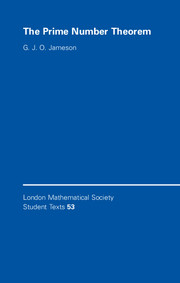Book contents
6 - An “elementary” proof of the prime number theorem
Published online by Cambridge University Press: 05 June 2012
Summary
Both proofs of the prime number theorem given in chapter 3 are “analytic” in the sense that they rely fundamentally on theorems of complex analysis, following the design set out by Riemann. As we have seen, these methods ultimately prove the theorem very satisfactorily, exhibiting it as one case of a wider family of theorems. However, one would surely expect to be able to prove a theorem about integers without resorting to concepts like holomorphic complex functions, which are seemingly far removed from pure number theory. Such a proof, reverting to the legacy of Chebyshev, would be called “elementary”. Ideas from real analysis, such as integral estimation for series, would be allowed (the theorem is, after all, a statement about a limit), but not those from complex analysis. Defined in this way, the term “elementary” is not to be confused with “simple”!
This question attracted a great deal of interest after the original proof had become known. G. H. Hardy, a leading mathematician of the time, predicted in 1921 that such a proof was “extraordinarily unlikely”, but that if one were to be found, it would involve such basic new ideas that it would “cause the whole theory to be rewritten”.
An elementary proof was finally discovered by A. Selberg and P. Erdös in 1948. They worked in cooperation, but eventually published different versions separately, both based on a formula discovered by Selberg.
- Type
- Chapter
- Information
- The Prime Number Theorem , pp. 206 - 222Publisher: Cambridge University PressPrint publication year: 2003
- 1
- Cited by



